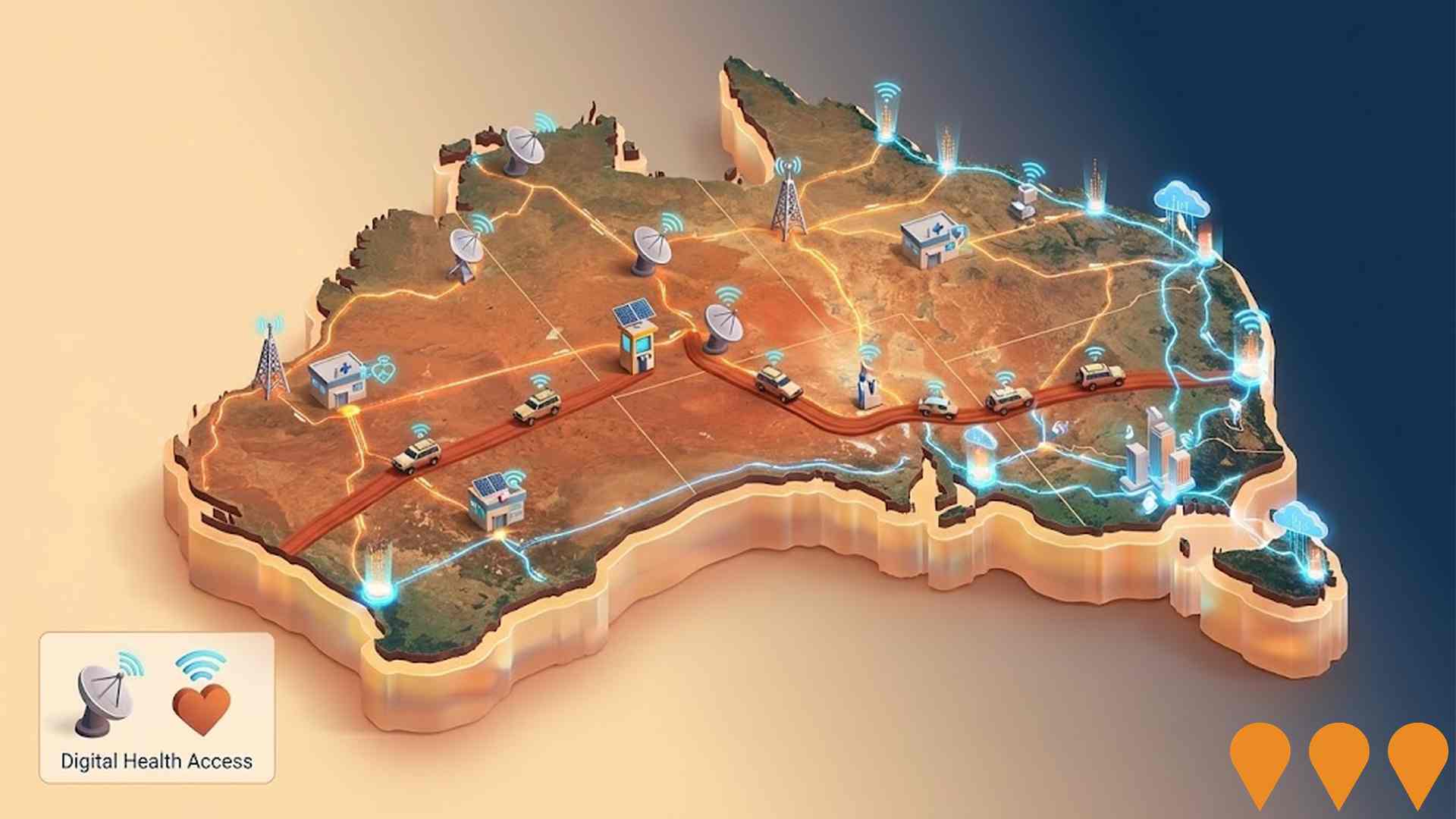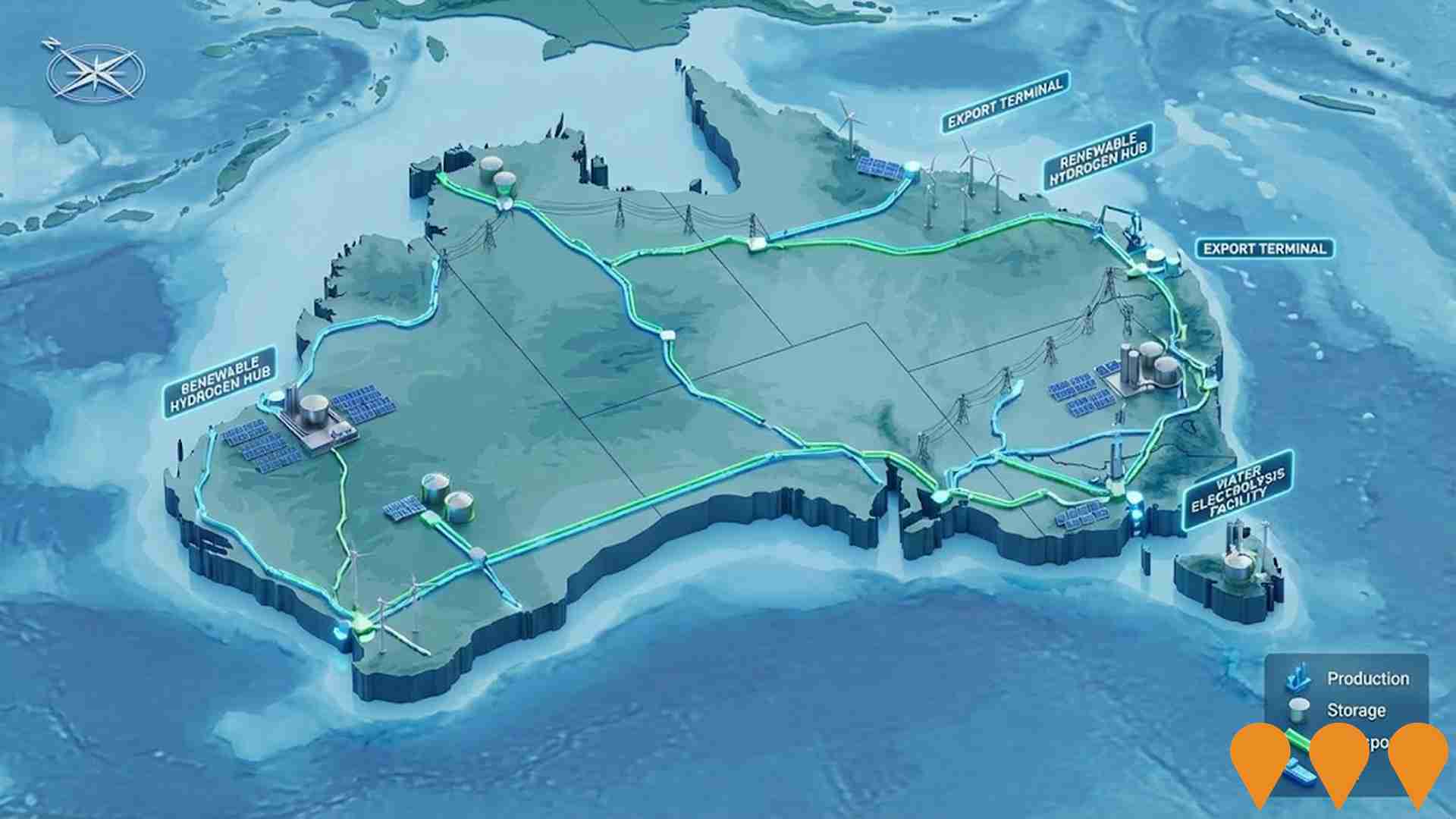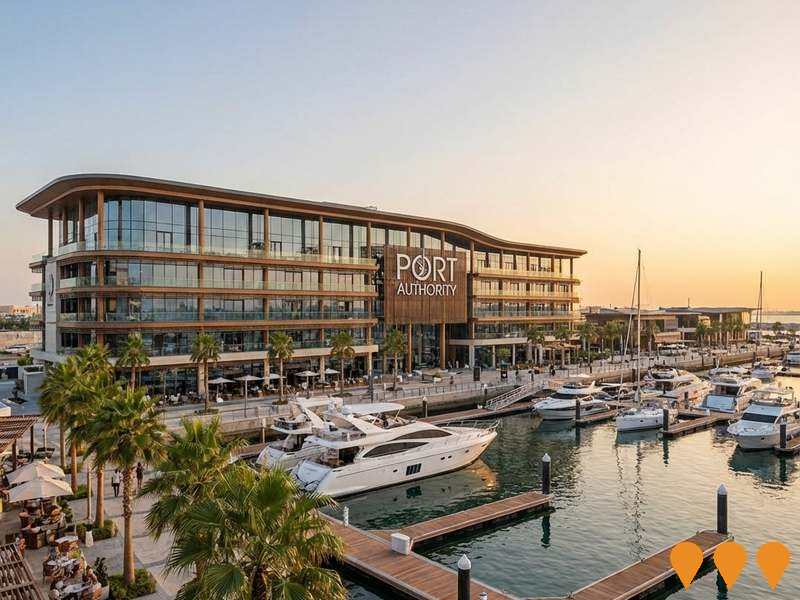Chart Color Schemes
est. as @ -- *
ABS ERP | -- people | --
2021 Census | -- people
Sales Activity
Curious about local property values? Filter the chart to assess the volume and appreciation (including resales) trends and regional comparisons, or scroll to the map below view this information at an individual property level.
Find a Recent Sale
Sales Detail
Population
King Island is positioned among the lower quartile of areas assessed nationally for population growth based on AreaSearch's assessment of recent, and medium term trends
King Island's population was approximately 1,676 as of August 2025. This showed an increase of 59 people from the 2021 Census figure of 1,617, representing a growth rate of 3.6%. The change was inferred from ABS data indicating an estimated resident population of 1,660 in June 2024 and an additional 47 validated new addresses since the Census date. This resulted in a population density of 1.5 persons per square kilometer. King Island's growth rate exceeded that of the SA3 area (3.3%), making it a regional growth leader. Overseas migration was the primary driver of this growth.
AreaSearch uses ABS/Geoscience Australia projections for each SA2 area, released in 2024 with a base year of 2022. For areas not covered by this data and post-2032 estimates, Tasmania State Government's Regional/LGA projections are adopted, adjusted using weighted aggregation from LGA to SA2 levels. Future demographic trends indicate an overall population decline by 177 persons by 2041. However, specific age cohorts like the 75 to 84 group are projected to grow by 54 people over this period.
Frequently Asked Questions - Population
Development
AreaSearch assessment of residential development drivers sees a low level of activity in King Island, placing the area among the bottom 25% of areas assessed nationally
King Island has received approximately five dwelling approvals per year. Over the past five financial years, from FY-21 to FY-25, 25 homes were approved, with one more approved so far in FY-26. On average, 1.1 people moved to the area annually for each dwelling built during these five years. This suggests a balanced supply and demand, maintaining stable market conditions.
However, recent data indicates this has decreased to -3.8 people per dwelling over the past two financial years, suggesting more balanced supply conditions. The average expected construction cost value of new homes is $447,000. In FY-26, $13.0 million in commercial approvals have been registered, indicating steady commercial investment activity. Compared to the Rest of Tas., King Island shows 14.0% lower construction activity per person and ranks among the 19th percentile nationally, offering more limited housing choices for buyers.
This supports demand for existing homes. The area's new construction has been entirely comprised of detached dwellings, maintaining its traditional low density character focused on family homes appealing to those seeking space. With an estimated 1101 people in the area per dwelling approval, King Island has a quiet and low activity development environment. Given the expected stable or declining population, there should be reduced pressure on housing, potentially creating opportunities for buyers.
Frequently Asked Questions - Development
Infrastructure
King Island has limited levels of nearby infrastructure activity, ranking in the 12thth percentile nationally
Changes to local infrastructure significantly impact an area's performance. AreaSearch identified six projects likely affecting this region. Notable initiatives include King Island Hospital Redevelopment - Stage 2, Currie Main Street Improvements, King Island Hub Project, and Ocean Dunes Golf Course Expansion. The following list details those most relevant.
Professional plan users can use the search below to filter and access additional projects.
INFRASTRUCTURE SEARCH
 Denotes AI-based impression for illustrative purposes only, not to be taken as definitive under any circumstances. Please follow links and conduct other investigations from the project's source for actual imagery. Developers and project owners wishing us to use original imagery please Contact Us and we will do so.
Denotes AI-based impression for illustrative purposes only, not to be taken as definitive under any circumstances. Please follow links and conduct other investigations from the project's source for actual imagery. Developers and project owners wishing us to use original imagery please Contact Us and we will do so.
Frequently Asked Questions - Infrastructure
Enabling Digital Health Services for Regional and Remote Australia
National initiative to expand and improve digital health access for people in regional and remote Australia. Focus areas include enabling telehealth and virtual care, upgrading clinical systems and connectivity, supporting secure information exchange, and building workforce capability in digital health, aligned with the Australian Government's Digital Health Blueprint and Action Plan 2023-2033.

Enabling Infrastructure for Hydrogen Production
Australia has completed the National Hydrogen Infrastructure Assessment (NHIA) to 2050 and refreshed its National Hydrogen Strategy (2024). The programmatic focus has shifted to planning and enabling infrastructure through measures such as ARENA's Hydrogen Headstart and the Hydrogen Production Tax Incentive (from April 2025). Round 2 of Hydrogen Headstart consultation occurred in 2025. Collectively these actions aim to coordinate investment in transport, storage, water and electricity inputs linked to Renewable Energy Zones and priority hubs, supporting large-scale renewable hydrogen production and future export supply chains.

Bulk Water Supply Security
Nationwide program led by the National Water Grid Authority to improve bulk water security and reliability for non-potable and productive uses. Activities include strategic planning, science and business cases, and funding of state and territory projects such as storages, pipelines, dam upgrades, recycled water and efficiency upgrades to build drought resilience and support regional communities, industry and the environment.

National EV Charging Network (Highway Fast Charging)
Partnership between the Australian Government and NRMA to deliver a backbone EV fast charging network on national highways. Program funds and co-funds 117 DC fast charging sites at roughly 150 km intervals to connect all capital cities and regional routes, reducing range anxiety and supporting EV uptake.

Network Optimisation Program - Roads
A national program concept focused on improving congestion and reliability on urban road networks by using low-cost operational measures and technology (e.g., signal timing, intersection treatments, incident management) to optimise existing capacity across major city corridors.

King Island Hospital Redevelopment -Stage 2
A modern, efficient and functional facility from which to deliver hospital and community health services, including the capacity to broaden the scope of health services provided to the King Island community.

Currie Main Street Improvements
Improvements to Currie's CBD, including new parking alignment on Edward Street, Main Street, and Meech Street, construction of new kerb bulbing, and access ramps to improve pedestrian safety and accessibility.

King Island Hub Project
Construction of a new multi-purpose community hub near the Currie lighthouse. The project includes a central fireplace featuring local rock, display cabinets for historical artefacts, and statement furniture from local materials. The project is managed by Evolve Commercial.

Employment
Employment conditions in King Island rank among the top 10% of areas assessed nationally
King Island's workforce is balanced across white and blue collar jobs, with diverse industry representation. Its unemployment rate was 1.0% in the year ending June 2025.
Employment grew by 2.3% during this period. As of June 2025950 residents were employed, with an unemployment rate of 2.9%, below Rest of Tas.'s rate of 3.9%. Workforce participation was 63.8%, higher than Rest of Tas.'s 55.7%. Key industries for employment are agriculture, forestry & fishing, manufacturing, and health care & social assistance.
Agriculture, forestry & fishing has a notable concentration, with employment levels at 3.2 times the regional average. Health care & social assistance employs 8.4% of residents, compared to 16.5% regionally. Many residents commute elsewhere for work, as indicated by Census data. Between June 2024 and June 2025, employment levels increased by 2.3%, while unemployment remained broadly flat. Rest of Tas., however, saw an employment decline of 0.5%. National employment forecasts from Jobs and Skills Australia, published in May 2025, project national growth of 6.6% over five years and 13.7% over ten years. Applying these projections to King Island's employment mix suggests local growth of approximately 4.6% over five years and 10.6% over ten years.
Frequently Asked Questions - Employment
Income
Income levels sit below national averages according to AreaSearch assessment
King Island's median income among taxpayers was $48,786 in financial year 2022. The average income stood at $61,176 during the same period. These figures are below those for Rest of Tas., which were $47,358 and $57,384 respectively. Based on Wage Price Index growth of 13.83% since financial year 2022, estimated median income as of September 2025 would be approximately $55,533, while the average is projected to reach around $69,637. According to the 2021 Census, personal income ranked at the 58th percentile ($845 weekly), and household income was at the 22nd percentile. The largest income bracket comprised 31.6% earning between $1,500 and $2,999 weekly, with 529 residents falling into this category. This is similar to the surrounding region where 28.5% occupy this bracket. Housing costs are manageable, with 91.4% retained, but disposable income sits below average at the 33rd percentile.
Frequently Asked Questions - Income
Housing
King Island is characterized by a predominantly suburban housing profile, with above-average rates of outright home ownership
King Island's dwellings, as per the latest Census, consisted of 95.4% houses and 4.6% other dwellings (semi-detached, apartments, 'other' dwellings), compared to Non-Metro Tas.'s 95.9% houses and 4.1% other dwellings. Home ownership in King Island stood at 47.6%, with mortgaged dwellings at 25.0% and rented ones at 27.4%. The median monthly mortgage repayment was $1,083, exceeding Non-Metro Tas.'s average of $1,053. The median weekly rent in King Island was $190, lower than Non-Metro Tas.'s figure of $200. Nationally, King Island's mortgage repayments were significantly lower at $1,083 compared to Australia's average of $1,863, and rents were substantially below the national figure of $375.
Frequently Asked Questions - Housing
Household Composition
King Island features high concentrations of lone person households, with a lower-than-average median household size
Family households account for 62.1% of all households, including 19.9% that are couples with children, 32.9% that are couples without children, and 7.3% that are single parent families. Non-family households make up the remaining 37.9%, with lone person households at 35.3% and group households comprising 3.2% of the total. The median household size is 2.1 people, which is smaller than the Rest of Tas. average of 2.3.
Frequently Asked Questions - Households
Local Schools & Education
King Island faces educational challenges, with performance metrics placing it in the bottom quartile of areas assessed nationally
The area's university qualification rate is 17.1%, significantly lower than the Australian average of 30.4%. This disparity presents both a challenge and an opportunity for targeted educational initiatives. Bachelor degrees are most common at 12.2%, followed by postgraduate qualifications (2.8%) and graduate diplomas (2.1%). Vocational credentials are prevalent, with 43.8% of residents aged 15+ holding them - advanced diplomas account for 10.5% and certificates for 33.3%.
Educational participation is high at 25.9%, including 11.8% in primary education, 6.8% in secondary education, and 1.7% pursuing tertiary education. King Island District High School serves the area with an enrollment of 185 students as of the latest available data. The school offers integrated K-12 education for academic continuity.
Frequently Asked Questions - Education
Schools Detail
Nearby Services & Amenities
Transport
No public transport data available for this catchment area.
Frequently Asked Questions - Transport
Transport Stops Detail
Health
Health performance in King Island is lower than average with common health conditions somewhat prevalent across both younger and older age cohorts
King Island faces significant health challenges with common health conditions prevalent among both younger and older age cohorts. Approximately half of its total population (~838 people) has private health cover, compared to the national average of 55.3%.
The most common medical conditions are arthritis (9.9% of residents) and mental health issues (7.6%). A majority of residents (66.9%) report being free from medical ailments, slightly higher than the Rest of Tas. figure of 65.0%. As of a certain date, 22.9% of residents are aged 65 and over (383 people). Health outcomes among seniors on King Island are particularly strong, performing better than the general population in health metrics.
Frequently Asked Questions - Health
Cultural Diversity
King Island ranks below the Australian average when compared to other local markets across a number of language and cultural background related metrics
King Island had low cultural diversity, with 84.4% being citizens, 85.5% born in Australia, and 93.6% speaking English only at home. Christianity was the main religion, comprising 40.8%. Buddhism was overrepresented at 1.2%, compared to 0.8% regionally.
Top ancestry groups were English (33.1%), Australian (32.1%), and Scottish (7.5%). Dutch (2.5%) was notably overrepresented versus regional average of 1.6%. New Zealanders comprised 0.9% (regional avg: 0.6%) and South Africans 0.6% (regional avg: 0.2%).
Frequently Asked Questions - Diversity
Age
King Island hosts an older demographic, ranking in the top quartile nationwide
King Island's median age is 44, comparable to Tasmania's figure of 45 but significantly higher than Australia's national norm of 38. The 5-14 age group shows strong representation at 12.9%, compared to the Rest of Tasmania's figure. However, the 45-54 cohort is less prevalent at 9.7%. Post-2021 Census data shows that the 15 to 24 age group has grown from 6.4% to 8.7% of the population, while the 5 to 14 cohort increased from 11.0% to 12.9%. Conversely, the 45 to 54 cohort has declined from 11.8% to 9.7%, and the 65 to 74 group dropped from 14.6% to 12.9%. By 2041, King Island is expected to see notable shifts in its age composition. Leading this demographic shift, the 75 to 84 group will grow by 37%, reaching 180 from 131. The aging population dynamic is clear, with those aged 65 and above comprising 74% of projected growth. Conversely, population declines are projected for the 25 to 34 and 65 to 74 cohorts.


